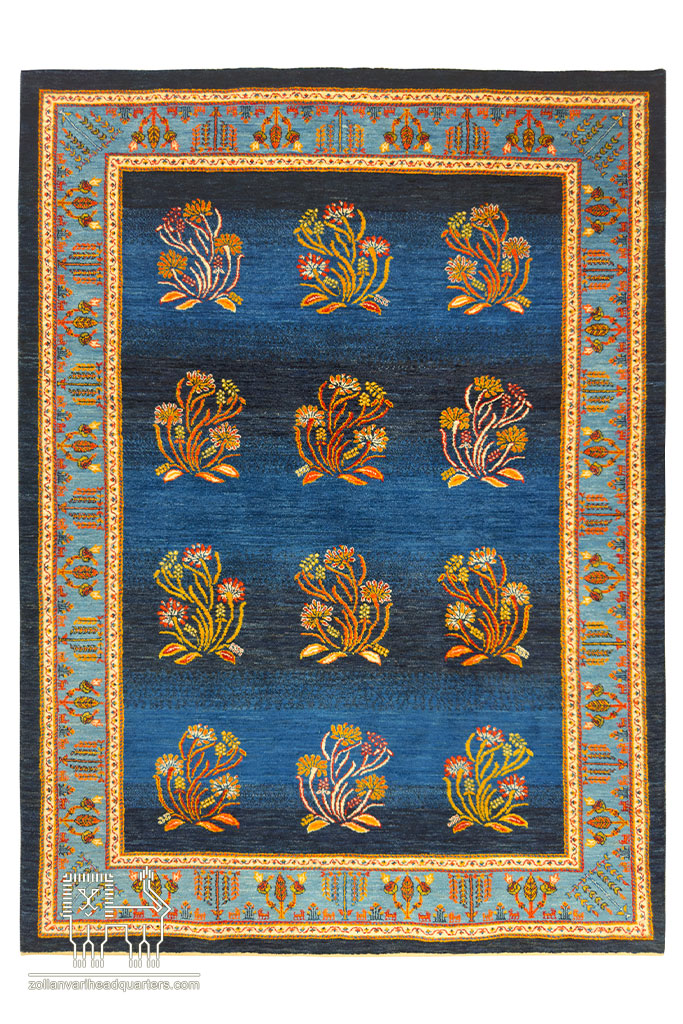Handwoven Carpet Knot: A Key Factor in Carpet Durability
The carpet knot is one of the most essential and prominent features of handwoven carpets. It not only enhances their beauty and durability but also adds a unique touch of identity and culture to each region. These knots are recognized by different shapes and names in various parts of the world, each telling its own unique story. Weavers and carpet enthusiasts are always in search of more detailed and profound information about these weaving techniques to gain a better understanding of the production process and the aesthetics of each carpet. In this article from the Zollanvari website, we will first provide a brief definition of the knot concept, and then examine the different types of carpet knots to introduce you to the fascinating and diverse world of this art.
What is a Carpet Knot?
The carpet knot, as the most fundamental element in the production of high-quality handwoven carpets, plays a key role. These knots, made from threads or fibers, are arranged systematically, one on top of the other, to create the strong and beautiful structure of the carpet. Terms such as fringe, zelet, and ilme are also used for these knots, and each of them has specific characteristics that affect the final quality of the carpet.
Among these features, the diameter, curve, and direction of the knot are important, as they ultimately influence the pile and appearance of the carpet. The color of the knot also plays a crucial role in creating the carpet’s design and pattern, and therefore, the variety of colors in the knots adds to the appeal of the carpets.
 Carpet Knot
Carpet Knot
Types of Handwoven Carpet Knots
In the previous section, we discussed the importance and impact of knots in carpet weaving. This key factor has led to the development of various models for their use. Here, we aim to introduce the most important and well-known types of carpet knots. Among the different types of knots, two models stand out, as nearly 90% of handwoven carpets are made using these two types. Therefore, we will focus on these two types, known as the Turkish and Persian knots.
Turkish Knot
The Turkish knot, as one of the most popular and widely used types of knots in the weaving of Persian carpets and tapestries, holds special significance. It is interesting to note that over 70% of these artistic works are woven using this type of knot. This knot not only provides high durability to the carpets but also preserves their elegance and beauty. One of the main advantages of the Turkish knot is the use of a hook in the weaving process, which minimizes the possibility of errors and the use of paired knots. Therefore, this type of knot allows artisans to create high-quality, long-lasting works.
Persian Knot
The Persian knot is famous for its unique characteristics, earning it the name “asymmetric knot.” This knot specifically enhances the beauty and durability of carpets by twisting the yarn around each other to create different structures. The Iranian knot, commonly used in carpets from Eastern Iran, Pakistan, and India, ties one half of the warp tightly and the other half loosely, creating a knot that, along with the Turkish knot, provides additional durability and is ideal for carpets with high density and intricate designs.
After the Turkish knot, the Persian knot is the most favored and widely used among carpet weavers. Cities such as Sultanabad (Arak), Qom, Isfahan, and Mashhad are among the regions that employ this knot in their weaving traditions. Since the Persian knot is tied around only one warp, it is also referred to as an asymmetric knot.
Final Words
As we mentioned in this article, the handwoven carpet knot is a key element in the production of durable and beautiful carpets, giving each region’s cultural identity a unique expression. These knots, made from yarns or fibers, are systematically arranged next to each other and greatly impact the final quality of the carpet.


Write a Comment